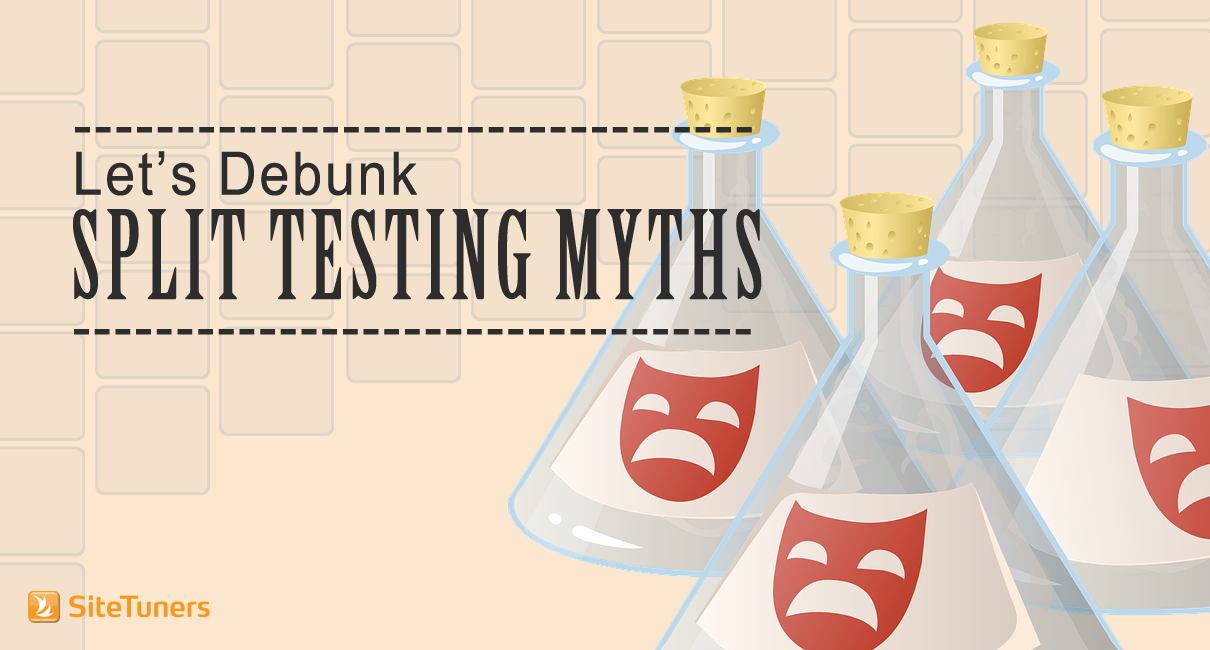Sometimes, technology changes faster than our operating knowledge about how the world works, or the terms we use to describe our environment.
Take “long-distance” calls, for instance. When we first started using the term, the equipment used for local calls and long-distance calls were different, and the payment schema reflected that. VoIP changed that, but long-distance as a concept is still something we cling to (and some providers are happy to charge us for).
When it comes to testing, many of the concepts that a lot of marketers hold dear are from the early days, when testing software was pricey, technical, and generally just for Fortune 500 companies.
Let’s make sure your testing knowledge doesn’t use long-distance-type concepts in a VoIP world.
Myth #1: Testing is Expensive
‘Might as well start with the most glaring one.
Split and multivariate testing started out as key differentiators for large sites, with tools well out of the price-range for small-to-medium-sized businesses.
Then Google Web Site Optimizer launched. Then the testing features got integrated into the most used web analytics tool in the market – Google Analytics.
Today, testing is less “differentiator for large sites” and more “table stakes.” It’s almost a must for anyone doing even basic online marketing – everyone has access to the tools, so that just leaves the expertise.
The actual expertise required to start setting up tests is not a very high bar to clear, which leads us to …
Myth #2: Testing Takes a Lot of Technical Skills
The next time someone tells you that they want to get started with testing, but they have “marketing” rather than “technical” skills, point them to this article.
Yes, testing was fairly technical when the tools for it just started getting released, but today, that’s just not the case.
Here are all “technical” requirements to set up a split test within Google Analytics:
- Enough knowledge to insert a piece of code on the <head> tag
- Enough skills to build two pages that are slightly different
- Some comfort with the interface of Google Analytics
And that’s it.
Pretty much anyone who is savvy enough to insert the Google Analytics tracking code is ALSO savvy enough to get started with split testing.
Haven’t set up your first split test yet? Take a few minutes and get started with your first test.
Click here to read A/B Testing Basics: Take 30 Minutes and Get Started with Split Testing.
Speaking of which …
Myth #3: Split Tests Take a Lot of Time to Set Up
Getting the split tests you create to start producing meaningful results can take a while – several weeks for a page with modest traffic and conversions.
And of course, finishing tests isn’t the same as improving the site. Sometimes, your challenger pages will fail to convert better or have a higher bounce rate than your existing page.
So the actual benefits of testing can be observed in months, not days.
But the actual setup? If you know what you want to test, and you have isolated the element you want to change, the setup takes minutes.
See this page to get familiar with the basics, or this page if you want to get cracking.
So if testing is low-cost, quick to set up, and not very technical, is it just finding the correct areas to test that keeps people from testing? One of the core reasons some marketers stay away from testing is the belief that …
Myth #4: You Should Test EVERYTHING
Of all the myths about testing that somehow get traction, this might be the most dangerous one. This mentality doesn’t just get testing wrong, it gets Conversion Rate Optimization (CRO) wrong.
CRO is an exercise in picking your spots.
Marketers can never “get” to everything. Success in testing comes from rejecting 10 GOOD ideas to test in favor of 3 GREAT ideas to pursue.
You shouldn’t only NOT TEST EVERYTHING, you should have a very careful methodology to select the pages you need to improve.
Here are a few ways to find the pages you need to test:
- Find your “trouble” pages. That is, search for the areas where you have a lot of traffic, but also a very high bounce rate. Fortunately, there’s a Google Analytics trick to make that easier.
- Avoid known UX issues. See this article about areas that are a no-go for split testing.
- Start with web analytics. You can’t test low-traffic, low-conversion pages. You will not get statistically significant results.
Putting it All Together
There are a lot of misconceptions about testing.
The sooner you set up your first test, the more you’ll use real-world knowledge, and the less reliant you’ll be on potentially dated or just plain wrong information about testing.
Additional References:


